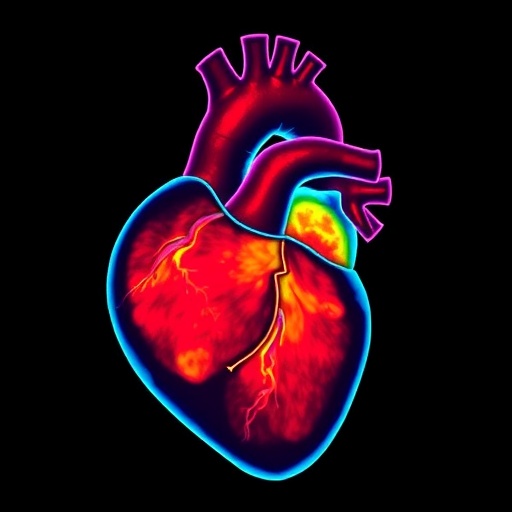
In a groundbreaking study that could have significant implications for antimicrobial therapies, researchers led by Sklyar, Demeshko, and Evstigneeva have made strides in understanding the structure-activity relationship of novel arylhydrazones derived from imidazodiazabicycloalkanones. This innovative research has unveiled promising antibacterial properties, which are essential in an era marked by the growing resistance of pathogens to conventional antibiotics. As the scientific community grapples with the challenges posed by multidrug-resistant bacteria, the need for new compounds that can effectively combat these infections has never been more pressing.
The research team conducted an extensive molecular docking analysis to explore the binding interactions between the synthesized arylhydrazones and their biological targets. Molecular docking is a crucial computational technique that predicts how small molecules, such as drugs, bind to a receptor of known 3D structure. This approach offers insights into the efficacy of these new compounds and aids in the identification of the most promising candidates for further development. The integration of computational modeling with experimental validation highlights the multidisciplinary nature of modern drug discovery efforts.
Central to their findings was the identification of specific structural features that contributed to the antibacterial potency of these arylhydrazones. The researchers meticulously designed various analogs of imidazodiazabicycloalkanones, tweaking individual components of the molecule to observe changes in antibacterial activity. This systematic exploration allowed for the elucidation of the critical physicochemical properties necessary for antimicrobial efficacy, providing a roadmap for future structural modifications of similar compounds.
The study also reveals that the antibacterial activity observed in these novel arylhydrazones is not solely dependent on their chemical structure but also on the target bacterial strains. Different bacteria may require tailored approaches based on their unique resistance mechanisms. Given this complexity, the researchers emphasized the importance of a broad-spectrum evaluation when assessing the antibacterial properties of these compounds. The potential for developing targeted therapies that overcome specific bacterial defenses could transform treatment paradigms in infectious diseases.
Highlighting the significance of their research, the authors pointed out that the increasing prevalence of antibiotic-resistant infections poses a severe threat to global health. Traditional antibiotics have been rendered ineffective against many pathogens due to mutations and adaptive resistance mechanisms. This alarming trend underscores the imperative need for novel compounds with unique mechanisms of action. The arylhydrazones described in this study not only exhibit potent antibacterial effects but may also offer alternative treatment avenues against resistant bacteria.
In light of these findings, the researchers caution that while the initial results are promising, further investigations are essential to fully understand the mechanisms underpinning the antibacterial activity of these compounds. Experimental validation through in vitro and in vivo studies will be critical for assessing their safety and efficacy in real-world scenarios. The journey from the laboratory to clinical application is fraught with challenges, yet the potential rewards—effective treatments for bacterial infections—make it a worthy endeavor.
The collaborative nature of this research also exemplifies how interdisciplinary approaches can drive advancements in medicinal chemistry. By bringing together expertise in synthetic chemistry, microbiology, and computational modeling, the research team was able to generate meaningful results that contribute to the understanding of antibacterial drug design. Such collaborations are vital for fostering innovation and accelerating the development of next-generation antimicrobial agents.
Moreover, the implications of this research extend beyond the immediate context of antibiotic development. The methodologies employed in this study can be adapted for use in investigating a wide range of bioactive compounds aimed at various therapeutic targets. As scientists continue to explore the vast chemical space available, the lessons learned from this study will be invaluable in guiding future research endeavors.
Public health officials are keenly aware of the need for novel strategies to combat antibiotic resistance, and studies like this one play a critical role in addressing this urgent challenge. Initiatives promoting research and funding for the development of new antibiotics are essential, especially as pharmaceutical companies face declining returns on investment for antibiotic R&D. The research community’s commitment to innovation and excellence in this field will be a determining factor in curbing the relentless tide of resistant infections.
In closing, the novel arylhydrazones of imidazodiazabicycloalkanones explored by Sklyar and colleagues mark a significant step forward in the ongoing battle against bacterial infections. With further validation, these compounds could very well serve as the foundation for a new class of antibiotics capable of outsmarting even the most stubborn pathogens. As we continue to seek solutions to the global health crisis posed by antimicrobial resistance, the work of these researchers offers a glimpse of hope and a path forward.
The realm of antibacterial research is rapidly evolving, and studies focusing on new structures and mechanisms hold great promise. As this field progresses, ongoing collaboration between scientists, clinicians, and public health officials will be essential in ensuring that the findings translate into real-world solutions. A concerted effort is needed to bring innovative treatments from the laboratory bench to the patient bedside, providing effective care solutions to those who need it most.
In summary, the findings from this study not only enrich our understanding of the structure-activity relationship of new arylhydrazones but also reaffirm the importance of ongoing research in this critical area. By harnessing the potential of novel compounds and multidisciplinary methodologies, researchers are setting the stage for a new era in antimicrobial therapy—one where innovative treatments can effectively address the growing threat of antibiotic-resistant infections.
Subject of Research: Antibacterial properties of novel arylhydrazones.
Article Title: Structure–activity relationship and molecular docking analysis of novel arylhydrazones of imidazodiazabicycloalkanones with antibacterial properties.
Article References: Sklyar, A.E., Demeshko, I.A., Evstigneeva, S.S. et al. Structure–activity relationship and molecular docking analysis of novel arylhydrazones of imidazodiazabicycloalkanones with antibacterial properties. Mol Divers (2025). https://doi.org/10.1007/s11030-025-11302-7
Image Credits: AI Generated
DOI:
Keywords: Arylhydrazones, imidazodiazabicycloalkanones, antibacterial properties, molecular docking, antibiotic resistance.
Tags: antibacterial arylhydrazonesantimicrobial therapiesbinding interactions in drug designcomputational modeling in pharmacologydrug discovery techniquesexperimental validation in drug developmentimidazodiazabicycloalkanonesmolecular docking analysismultidrug-resistant bacterianovel antibacterial compoundsstructural features of arylhydrazonesstructure-activity relationship




